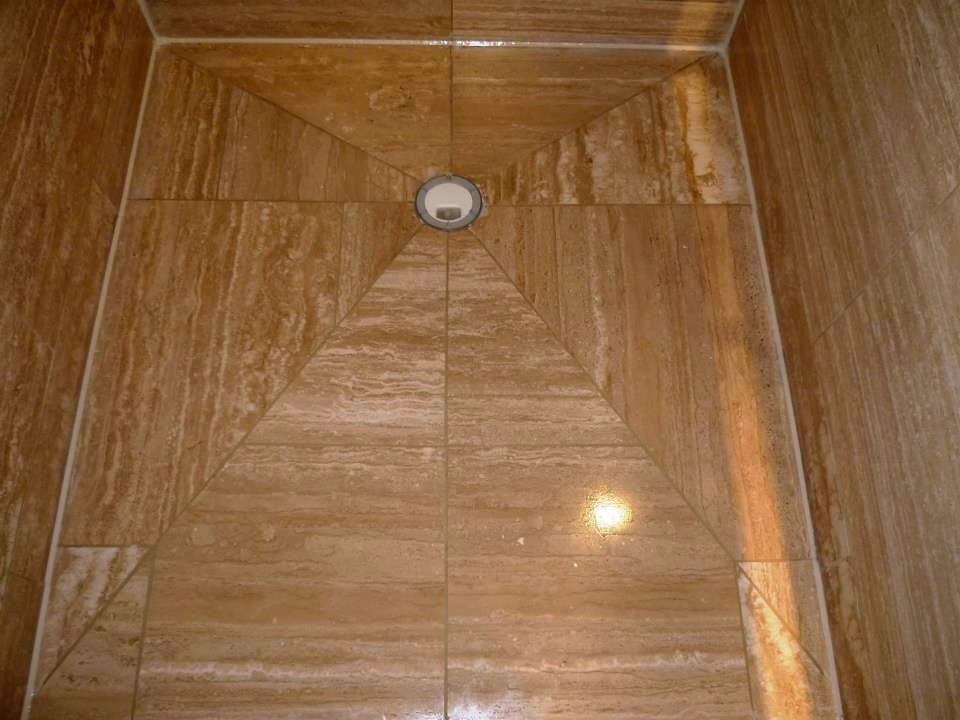This Travertine wet room in Glasgow was in a sorry looking state, the tiles had become very dull and there was evidence of mould especially around the silicone.

Cleaning a Travertine Wet Room
The first job was to cut out all the mouldy silicone around the bottom of the shower cubicle; which had the added advantage of allowing us to clean the adjacent tiles right to the edges. Once the silicone was removed we decanted a dilution of Tile Doctor Pro-Clean into a spray bottle and began to spray it onto the wall tiles. Pro-Clean in an effective alkaline tile cleaner designed for use on stone tiles such as Travertine, spraying the product onto the wall allows it to mix with air making it lighter and easier to stick and soak into a vertical surface. The wall tiles and grout were then scrubbed using a stiff brush until the dirt and mould had been cleaned away.
Polishing Travertine Wall and Floor tiles
Once there tiles were free of dirt and mould we then used a set of six inch diamond encrusted burnishing pads with a hand held rotary machine to polish the travertine. The burnishing pads come in a set of four and you start with a coarse pad with a little water and work your way through the set moving from a the coarse pads through to the less abrasive pads; this process polishes the stone more and more until you get a smooth finish.
Sealing Travertine Tiles
Once the burnishing process was completed we then sealed the stone with two coats of Tile Doctor Colour Grow which is a colour enhancing sealer designed to protect the stone whilst lifting the colours out of the stone. Finally to finish off the job we renewed the silicone seal with Jasmine silicone around the floor and up the corners.

The job took the best part of a day and I think you will agree the results speak for themselves.
Those small six inch burnishing pads come in very handy for cleaning Travertine and Marble wall tiles.